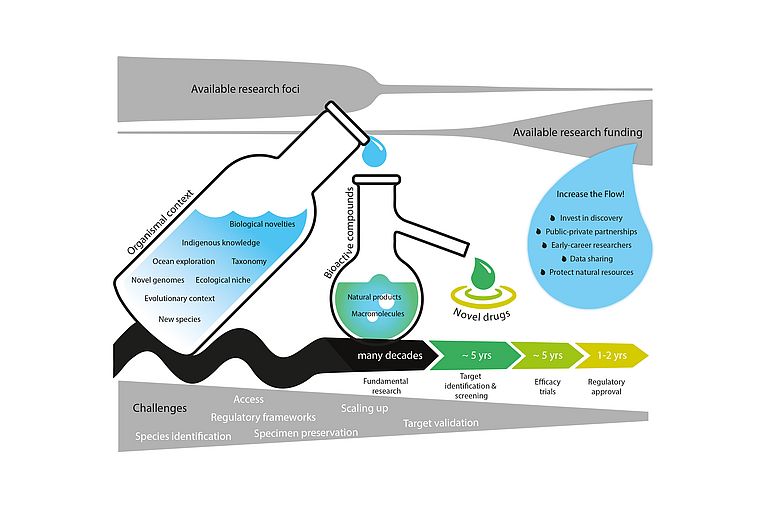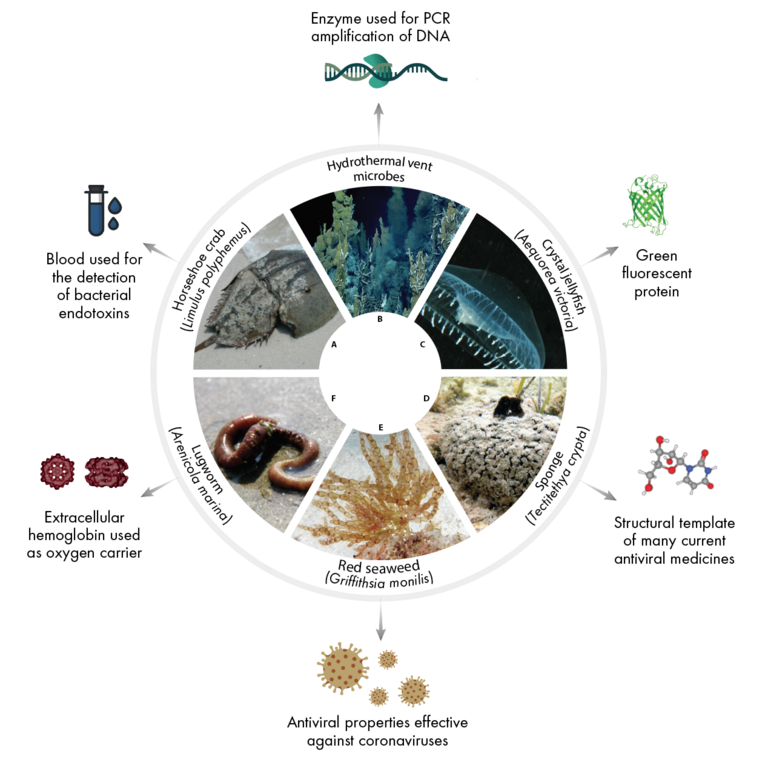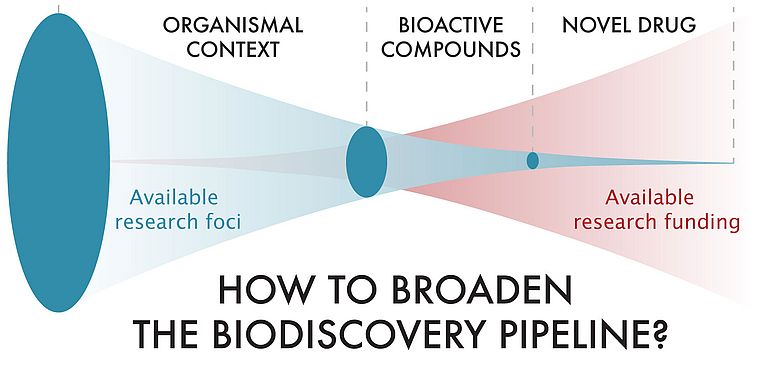Call for action to explore marine biological resources for discovery of new medicines
International team appeals for long-term financial support and strategy to study the potential of marine organisms as life-saving pharmaceuticals
More than half of the medicines, especially anti-infectives and anti-cancer drugs, derive from natural products, i.e. small organic molecules produced by living organisms. Over 400,000 natural products have been identified so far, 10% of which deriving from marine organisms or their microbial symbionts. Marine molecules have higher rate of chemical novelty, possessing approx. 4 times higher chances for becoming medicines than their terrestrial counterparts. Despite the short research history, approx. 15 marine natural product-based medicines have been approved and are being used in clinics. However marine discovery pipeline is long, risky, expensive and suffer from chronic underfunding, hence oceans remain untapped for biomedical studies.
An international team, including GEOMAR’s Prof. Dr. Deniz Tasdemir has called for an urgent investment and better strategy in exploration and utilization marine biological resources for their chemical constituents as potential life-saving drugs. “The current COVID-19 pandemic heavily underscores the necessity to invest, long term, into natural products and have few drugs or drug candidates in our drawer”, says Prof. Tasdemir. “The very first antiviral drug Ara-A was developed based on a small nucleoside discovered in the 1950s from a tropical sponge, and remains the ancestor of almost all antivirals we use today”, Tasdemir continues. Several marine biomolecules were shown to be effective against coronaviruses (MERS, SARS) in the past, but they never received interest from pharma industry to follow up or develop into medicines.
“Life in the ocean has existed for some 3.7 billion years, three times as long as life on land, resulting in enormousbiodiversity. However, only 10% of marine species have been described so far”, says Prof. Julia Sigwart, a biologist and taxonomist at Senckenberg Research Institute. We know less about our oceans than we know about the surface of Mars. Whenever funding is available, researchers report many new marine species. Due to lack of taxonomic capacity, it takes on average 20 years to give a taxonomic name to a new organism, a prerequisite prior to detection, purification and chemical characterization of bioactive metabolites. “Therefore, it has sometimes taken over 40 years to develop a marine-based pharmaceutical”, says Prof. Tasdemir, a pharmacist with over 25 years expertise on natural product chemistry and biodiscovery. Marine biodiscovery is the main pillar of marine biotechnology, but has become a low priority for research funding from either public or industry sources because of its lengthy and risky nature. With typically 3-4 years of very limited and extremely competitive public funding schemes, and no interest by industry, it is impossible to tap into marine resources and develop a medical pipeline’’, she continues. “Due to global warming and pollution, marine biodiversity has already severely declined, before we even gave a name to the organisms, let alone investigating their biomedical potential. No governmental funding agency or pharma company invests into early stage of marine biodiscovery, which is fatal in every way”, says Prof. Tasdemir.
The international team composed of researchers from Senckenberg Institute, Stockholm University, University of Aberdeen and GEOMAR have proposed concrete pathways to broaden the biodiscovery pipeline to benefit from potential of the ocean genome for global public health: (1) Long term and high priority investments by public funding agencies into marine biodiscovery including its early compound discovery phase (2) Close collaborations between academia and industry in all stages (3) Provide new opportunities for early-career researchers worldwide to engage in high-risk research without risking their careers; (4) Sharing data and compound libraries with global networks; and (5) Protecting marine biodiversity at its source through strong conservation efforts.
The treasures of the ocean have provided fundamental breakthroughs in human health and still remain under-utilised for human benefit. “As the United Nations Decade of Ocean Science for Sustainable Development 2021-2030 begins, it is now time to take purposeful and systematic steps to support the whole marine biodiscovery pipeline and eliminate its bottlenecks. The strategies suggested would dramatically increase the diversity of solutions available for future global challenges, including future pandemics”, Prof. Tasdemir concludes.
Reference:
Sigwart, J., Blasiak, R., Jaspars, M., Jouffray, J.-B., and Tasdemir, D., 2020: Unlocking the potential of marine biodiscovery. Nat. Prod. Rep., DOI: 10.1039/d0np00067a





